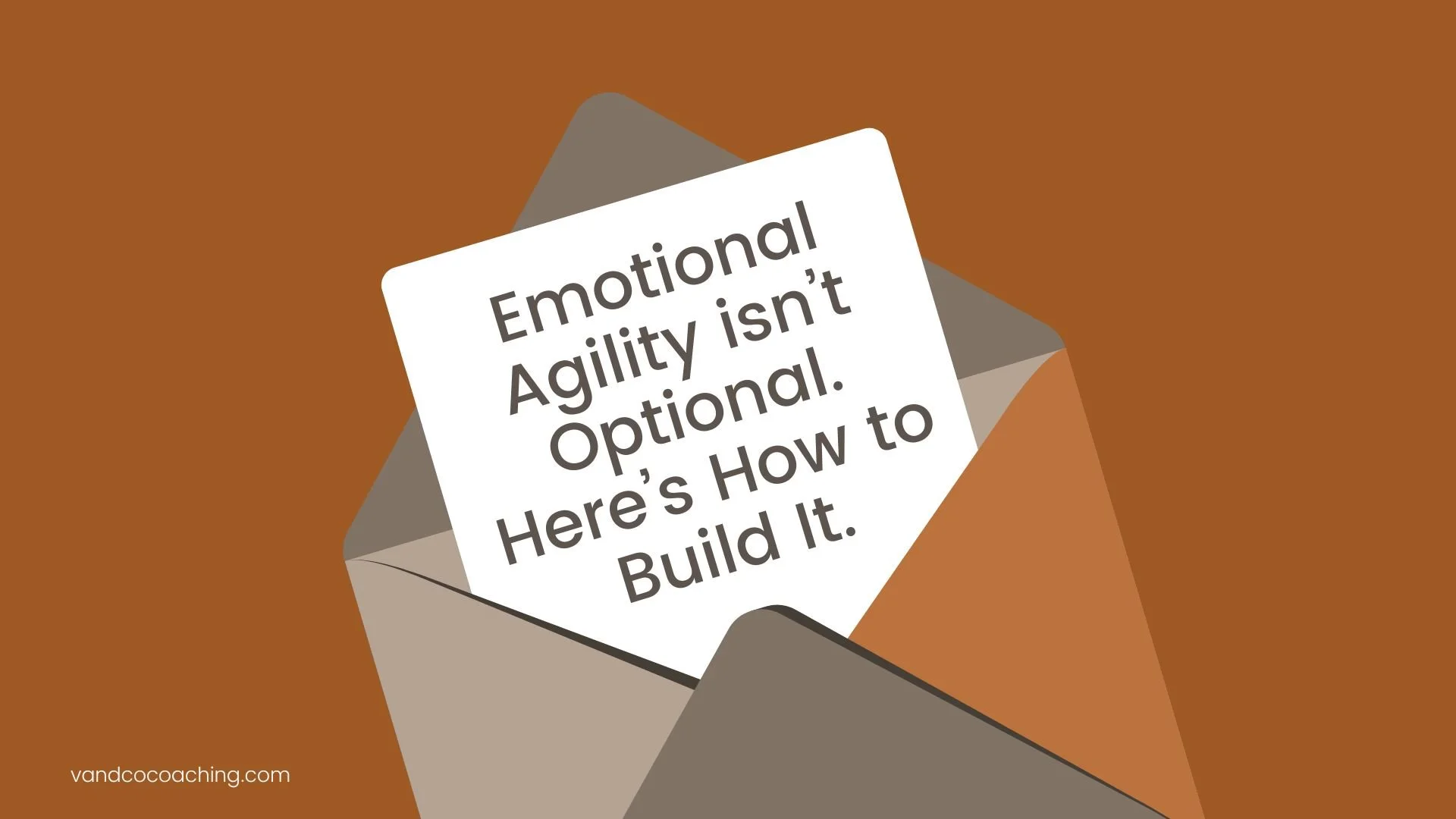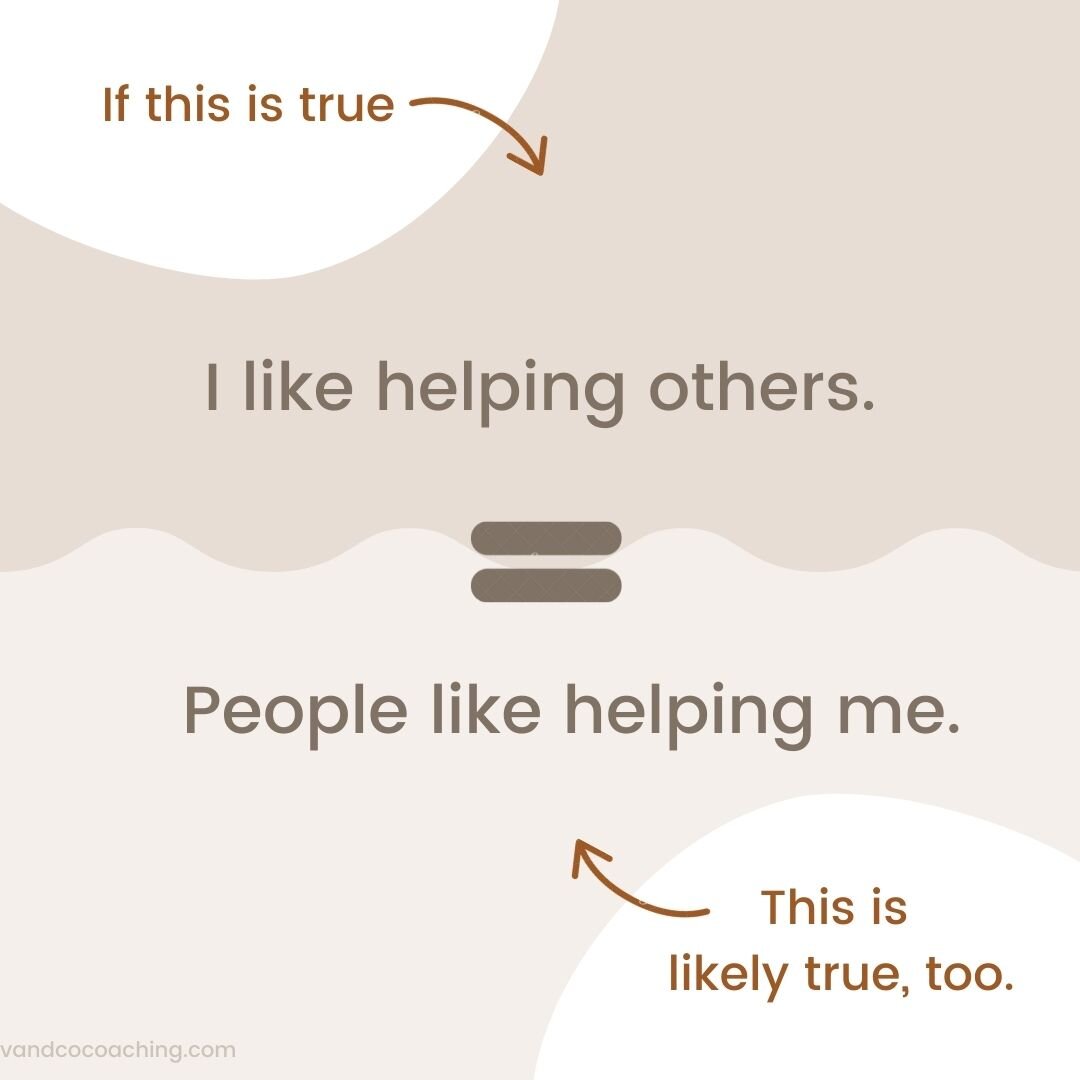Emotional Agility isn’t Optional. Here’s How to Build It.
Regulation Station
Raise your hand if you've ever regretted an email you sent while annoyed 🙋♀️
Today, we’re getting into some simple, science-backed ways to notice, understand, and work with your emotions, so they help you lead, not just react. Unregulated motions can quietly chip away at our energy and clarity. Over time, this shows up as burnout, misalignment, or even self-doubt.
Previously, we began to bridge the emotional knowledge gap by sharing the Cognitive Behavioral (CBT) Triangle, which demonstrates how our emotions impact us and why it’s important to get to know our emotions.
Now that we’re more familiar with our emotions and how they function, let’s talk about how to manage emotions at work.
So let’s dive in.
Why Emotions at Work Feel So Confusing
Emotions round out our larger interpretation of situations in accordance with our thoughts and behaviors. They’re a part of our evolutionary development and help us respond to the world around us. For better or worse, we cannot live without them.
So why is it so hard to live with them?
I absolutely love this question. Culturally, we’ve been conditioned to view emotions—especially the “uncomfortable” ones like anger and sadness—through a lens of judgment. How often do we hear things like “Shush, don’t cry” when a child is upset or “Be tough” when a young man shows vulnerability? We tell young girls and women, “Be happy,” as if negative emotions are somehow unacceptable. The result is a dichotomy where emotions like happiness and peace are “good,” while sadness, anger, and frustration are “bad.” For high performers used to having it all together, strong emotions can also feel like a failure of control.
However, emotions are neutral in that they all serve a purpose. They are our internal guide, signaling what’s happening inside us. They are signals providing vital information about how we’re experiencing the world. Yes, some emotions may feel more uncomfortable than others, but every emotion has a role to play. When we learn to understand and work with them, we can use that information to make better decisions, take purposeful actions, and regulate our responses in healthier ways.
First Comes Awareness, then Regulation
We got into emotional awareness a bit a few months back. As a refresher, emotional awareness is the ability to recognize and understand your own emotions as well as the emotions of those around you. Remember the analogy of having a 1000-piece jigsaw puzzle that’s missing the box with the picture: if you don’t have awareness (the box with the picture) of your emotions, you’re not going to be able to do the puzzle very effectively.
Well, now we have the puzzle pieces and the box with the image. What comes next? We get to dive into the puzzle, e.g, tackling the strategy of matching our corners and categorizing our colors. In the emotional world, this translates to emotional regulation. Emotional regulation is the ability to manage and respond to our emotions effectively. Once we know what we’re working with, we can address it.
Easy peasy, see? Not really. It’s hard to get out of our own head and change our thoughts and corresponding behaviors. It takes some conscious effort on our part. Luckily, we do not need any Jedi mind tricks, just a lot of introspection and perspective.
You Better Recognize: Best Introspective Practices for Emotional Awareness
1. Awareness
As with most things, the first step in emotional regulation is awareness. Before we dive into regulation strategies, we have to know what we’re working with. That means tuning into what we’re feeling, emotionally and physically, with mindful attention.
This might look like pausing to check in with your body, using tools like an emotions wheel to name what’s present, or simply noticing patterns over time.
Why does this matter? Because our emotions are messengers. Anger might point to a crossed boundary or a sense of injustice. Sadness might signal a loss of something you care about deeply. When we learn to recognize and name our emotions, we start to uncover what truly matters to us.
2. Nonjudgment
The next step in emotional regulation is recognizing that emotions are neither good nor bad—they simply exist. To build emotional resilience, we must learn to accept our emotions as they arise. This doesn’t mean we have to embrace every feeling, but it does require letting go of judgment and shame.
Nonjudgement can be easier when we understand where our emotions come from. Feelings like anger or sadness can signal that our needs, such as a desire for justice or a longing for connection, aren’t being met. Instead of suppressing these emotions, we can approach them with compassion and non-judgment. By acknowledging the conditions that give rise to our feelings, we take ownership of them. When we stop judging our emotions, we reduce the risk of them intensifying or spiraling out of control.
3. Accept the emotions as they are
True acceptance involves learning to “be with” our emotions. This means allowing them to surface and sitting with them in a non-reactive way. As Mindful Self-Compassion author Kristin Neff suggests, rather than running from uncomfortable emotions, we can practice observing them quietly and without judgment. The more we understand our emotions and the situations that trigger them, the better we become at recognizing the underlying thought patterns that shape our feelings. As the saying goes, “What you resist, persists.”
Now You Know What You’re Dealing with, Let’s Regulate It
Emotions do not last forever, but the painful ones can linger longer than we want. With the right tools, however, we can move on within our own terms. The best leaders aren’t those who avoid emotion, they’re the ones who stay grounded enough to respond wisely.
1. Reframe Your Thoughts
Now this is a little Jedi mind trick, an easy one though. It’s called cognitive reframing. It’s the classic glass half-empty vs. glass half-full debate. For example, instead of thinking “I’m failing at everything” when faced with frustration, try reframing it as, “I’m learning and growing, and this challenge will pass.” When you believe your frustration or sadness means you’re ‘not cut out’ for leadership, reframing can be a lifeline. Remind yourself that emotions aren’t proof you’re failing, they’re simply proof you’re human. Challenge your unhelpful or unrealistic thoughts by shifting your perspective on the situation. This simple shift can reduce emotional intensity and allow you to move forward with clarity.
2. Practice Opposite Action
Our emotional responses don’t always align with our long-term goals or may even reinforce unhelpful patterns. One of the most powerful tools for emotional regulation is a technique called Opposite Action. Opposite Action helps disrupt automatic reactions by intentionally choosing a response that opposes what the emotion urges us to do.
For example, imagine you're feeling socially anxious at a networking event. Your instinct might be to withdraw and avoid conversation. However, Opposite Action encourages you to do the opposite—approach someone and start a conversation. By challenging your initial reaction, you gather evidence that engaging with others isn’t as intimidating as it seemed. Fake it till you make it!
Over time, this practice helps reduce social anxiety and build confidence in similar situations. According to Radical Acceptance by Tara Brach (2019), emotions are natural responses that can be managed with compassion, but when we act on automatic reactions, we risk reinforcing negative thought patterns that lead to more stress and suffering. By intentionally choosing an alternative response, Opposite Action empowers us to break these cycles and regain a sense of control over our emotions.
3. Embrace Distractions when Needed
Distraction techniques are strategies designed to redirect attention away from distressing emotions, thoughts, or situations by focusing the mind on something else. In CBT and emotional regulation at work, distractions help break the cycle of rumination, anxiety, or negative thinking patterns.
The human brain has limited cognitive resources at any given time. When we become absorbed in distressing thoughts or emotions, they can feel overwhelming. Distraction works by "overloading" the brain with new stimuli or activities, reducing the intensity of distressing emotions.
Examples of Distraction Techniques:
Physical Activities: Engaging in physical activities like walking, exercising, or dancing can shift your focus from emotions to bodily sensations.
Creative Hobbies: Drawing, painting, writing, knitting, or any activity that requires concentration can be an effective distraction.
Mindful Breathing or Meditation: A quick grounding technique, like focusing on your breath or doing a body scan, can help take your attention away from distressing feelings.
Watch or Listen to Something Engaging: Watching a movie, listening to music, or a podcast can temporarily transport your attention to something more neutral or positive.
Mental Puzzles or Games: Solving a crossword, playing a video game, or doing a jigsaw puzzle can direct your mind away from emotional distress.
Engage in a Social Interaction: Chatting with a friend or family member, whether in person or through text, can provide a different perspective and emotional support.
Use Your Senses: Engaging your five senses can be a powerful distraction. For example, drinking a cup of tea, smelling a calming scent, or touching something soft can ground you in the present moment.
When to Use Opposite Action or Distraction?
Use Distraction when you need immediate relief or when emotions feel overwhelming, making opposite action too difficult in the moment.
Use Opposite Action when you’re ready to address and shift your emotional state by intentionally engaging in behaviors that contradict the emotional urge, leading to longer-term emotional resilience.
Use Distraction when:
You need immediate emotional relief
Your feelings are too overwhelming to process in the moment
You’re not quite ready to tackle your emotional urge head-on
Use Opposite Action when:
You feel emotionally safe enough to challenge your urge
You're looking to change your emotional pattern in the long run
You want to align your behavior with your goals and values
Working with Emotions is Work - But The Results Prove Themselves
The key to mastering emotional regulation is understanding that emotions are temporary. Just as joy is fleeting, so too are sadness, anger, and frustration. By cultivating awareness and applying intentional strategies, we can shift from being at the mercy of our emotions to actively managing them in ways that support our well-being.
As we build emotional resilience, we empower ourselves to navigate life’s challenges with greater clarity, balance, and purpose. The work may be ongoing, but the benefits like stronger relationships, better decision-making, and a deeper sense of self, are well worth the effort. Keep practicing, keep learning, and keep building your emotional agility.
Vanessa is an Executive and Leadership Coach and founder of V & CO Coaching, where she helps the overachieving and underfulfilled develop self-leadership skills so they can make their unique impact on the world. Having spent much of her life worrying about what others want, she now measures her life with the yardstick of joy. The joystick, as it were.






















